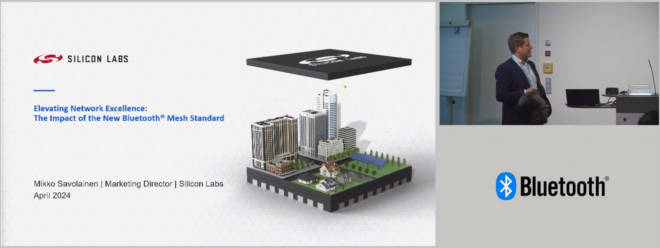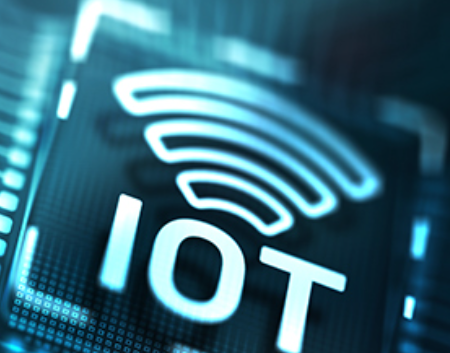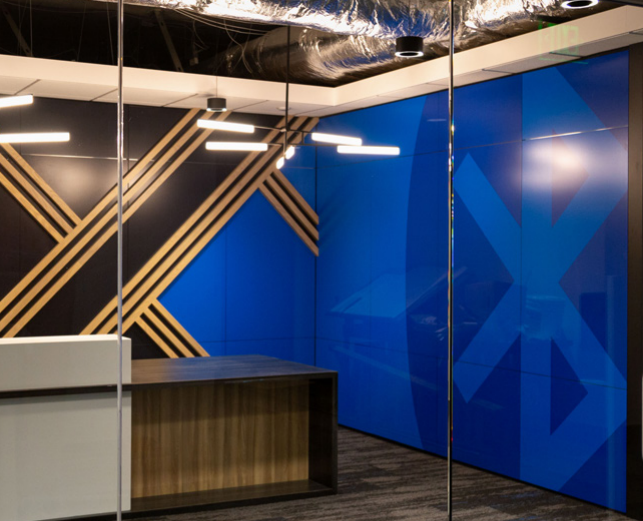Silvair, a strong advocate for Bluetooth Mesh and a leading contributor to the Bluetooth Mesh specifications, has been at the forefront of Bluetooth® Mesh-based wireless lighting control solutions. Offering dedicated tools for commissioning and managing Bluetooth Mesh lighting networks in commercial spaces, Silvair’s solutions integrate with a variety of lighting and sensing innovations from a wide range of component manufacturers.
I recently had an opportunity to talk with Szymon Slupik, Silvair CTO and co-founder, about the unique reliability that Bluetooth technology offers.
Compact, fast, radio-efficient data packets make the foundation for Bluetooth® Mesh.
Q&A with Szymon Slupik
Which wireless technologies offer the best reliability for commercial connected lighting systems?

We tested Bluetooth® Low Energy (LE) with several variants of 802.15.4 technologies (IP-based and non-IP-based on both sub-GHz and 2.4GHz frequency bands) back in 2012-2013. It was impossible to achieve the reliability and performance required by commercial lighting use cases with other 802.15.4 technologies. It became clear to us for any highly scalable and reliable system that we needed to start with the highest efficiency radio technology, enabling ultra-short packets and multiple frequency channels. We realized it was much more feasible to design a new mesh networking standard based on the solid foundation of Bluetooth LE rather than trying to improve the standards based on other radio technologies.
What does the reliability of Bluetooth technology enable for your company?
We had experience with multiple low-power wireless technologies and decided to bet on Bluetooth® LE even before Bluetooth Mesh was developed. It was obvious to us that many things about wireless systems could be fixed or improved, but the most important was the foundational radio technology. Bluetooth LE has, by far, been the best radio available. It has also turned out to be the fastest-growing technology, with the organization and the community open for new developments – and this is how Bluetooth mesh was born.
We have been one of the top contributors to the Bluetooth Mesh standard, always prioritizing reliability as the key enabler for the products and markets. Despite a seemingly broad choice of technologies, wireless mesh networks never managed to capture the commercial and industrial markets because they never offered sufficient reliability and scalability. We believe the properties of Bluetooth Mesh make it a perfect contender to change that by enabling highly scalable, highly reliable, and dependable low-power wireless mesh networks for buildings. The global industry uptake of Bluetooth mesh, we have seen since its adoption in 2017, has proven this approach has been right.
How does Bluetooth technology overcome potential interferers and enable reliable wireless data communication?
Compact, fast, radio-efficient data packets make the foundation for Bluetooth® Mesh. They are the key, fundamental reasons behind the reliability and scalability of Bluetooth Mesh networks. The reliability and scalability are what [finally] enable broad market adoption of wireless technologies for sensing and lighting control.
![]()
FEATURED
How Bluetooth® Technology Makes Wireless Communication Reliable
Learn about the challenge of wireless interference and the techniques Bluetooth technology uses to overcome it.
Can you explain the proactive retransmission technique that Bluetooth Mesh utilizes and how it contributes to the reliability of a Bluetooth Mesh network?
The traditional approach to reliability was to use acknowledged messages, have the sender wait for the acknowledgment to come back, and, if it did not, send the original message once again. I call this reactive; you react to the timeout while awaiting the acknowledgment, and you react by retrying. This results in very bad performance and large latency, and the acknowledgments consume radio bandwidth, effectively reducing the network capacity by half. This approach is also impossible to use in multicast (group) communication. A message sent to a group of 50 lights would result in a sudden storm of 50 acknowledgments coming back, most of them colliding with each other, resulting in total network saturation, or even a collapse.

Bluetooth® Mesh takes a proactive approach; instead of sending a single copy of a message, it sends multiple copies. A mesh message is by default sent as a set of three independent radio transmissions (each on a separate radio channel), and then the whole set may be repeated several times. Statistics is what gives us reliability. Assuming the probability of message loss on a single delivery attempt is 10%, adding a single retransmission brings that number down to 1 percent (10 percent of 10 percent). After two retransmissions, we are at 0.1 percent message loss probability, bringing the reliability to 99.9 percent (three nines). With four retransmissions, we get five nines of reliability. And these five transmissions are still only 10 percent of the load of the 50 acknowledgments in the reactive approach.
On top of that, we have multi-path delivery over multiple hops. In a mesh network, messages may travel over different paths from source to destinations, extending this proactive approach to address events, such as strong, long-lasting local interference or a potential loss of a relaying node. All that without any impact on latency, which in the end makes Bluetooth® Mesh very reliable as products using it do not exhibit any lags, popcorn effects, and message losses.
What should technical decision makers, product managers, and the like consider when evaluating wireless protocols for their emerging commercial and industrial projects?
You need to do proper due diligence and analyze the facts as well as understand the physics of wireless communication. This will help you understand the qualities which are critical with regard to your requirements. If reliability is one of them, you will find out why packet size and multipath delivery are important and that Bluetooth® Mesh scores best in both aspects. Talk to companies who have a track record of dealing with different wireless technologies and selected Bluetooth technology as the foundation for their products.
What would you say to change the perception of someone who thinks Bluetooth is still an unreliable wireless technology for use in the device networks space?
I would present them with a collection of case studies. I believe the customers’ and end-users’ opinions speak for themselves. We are fortunate to have reached the point when there is enough public evidence for Bluetooth® technology being the preferred technology for device networks.
![]()
FEATURED DOWNLOAD
Understanding Reliability in Bluetooth Technology
Download this detailed discussion on reliability in wireless data communication and the techniques Bluetooth technology uses to increase reliability.







![shutterstock 1653733096[1]](https://www.bluetooth.com/wp-content/uploads/2024/03/shutterstock_16537330961-660x372.jpg)




















